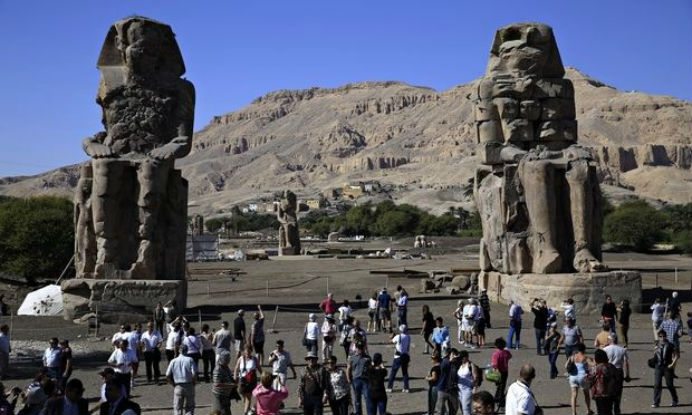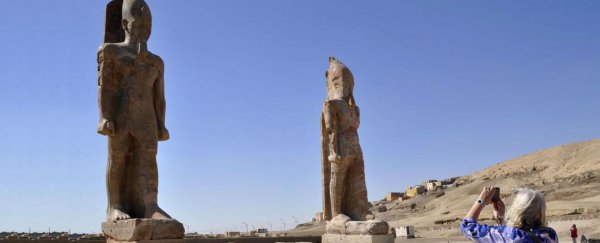A 13-metre-tall statue of the 18th dynasty Egyptian pharaoh Amenhotep III has been erected after more than 3,000 years at the northern gate of the King's Funerary Temple on the west bank of the Nile.
It joins a similar walking statue of the pharaoh, which was restored and erected back in March, the pair together again for the first time since an earthquake reduced them to pieces on the sand in 1,200 BC. According to the AFP, archaeologists completed the painstaking process of reassembling the 89 large pieces, and countless little fragments to reform the 110-tonne structure.
"These are up to now the highest standing effigies of an Egyptian king in striding attitude," project leader and German-Armenian archaeologist, Hourig Sourouzian, told the AFP.
Mid-stride, the massive Amenhotep III effigy is shown wearing a Hedjet, which is the formal name for the White Crown of pharaonic Upper Egypt. Just like its twin, the newly erected status holds in each hand a papyrus roll with the pharaoh's name clearly inscribed. "His belt, holding a dagger with a falcon-head handle, is fastened with a rectangular clasp bearing the names of the king," the AFP reports.
The open-air temple complex is also home to two 3,400-year-old massive stone statues of Amenhotep III sitting down - known as the Memnon Colossi. Stretching 21 metres tall, these imposing stone visages hint at the power wielded by this once-powerful political figure, known as 'Amenhotep the Magnificent'.
His reign, which is thought to have spanned from either June 1386 to 1349 BC or June 1388 BC to December 1351/1350 BC, was marked by unprecedented prosperity and magnificent art. Amenhotep III inherited the Egyptian Empire at the age of 12, and after his death in around 1354 BC, Amenhotep III's son, Amenhotep IV (or Akhenaten) took the throne.
 The Memnon Colossi. Credit: Hassan Ammar/AP
The Memnon Colossi. Credit: Hassan Ammar/AP
Here's a video of the unveiling, it's in Spanish, but gives a great indication of how imposing and huge these statues are:

Source: AFP
